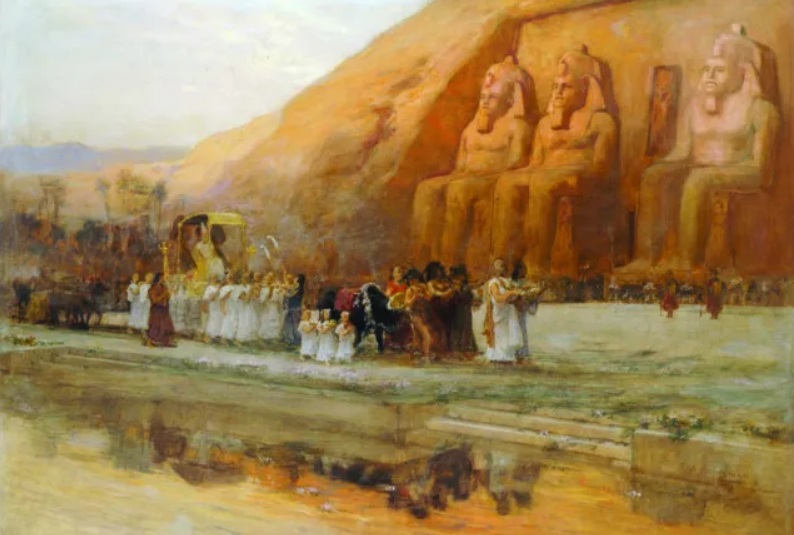Difference between revisions of "Abu Simbel (ruin)"
Tao alexis (talk | contribs) m (Tao alexis moved page Abu Simbel to Abu Simbel (ruin)) |
Tao alexis (talk | contribs) |
||
| (One intermediate revision by the same user not shown) | |||
| Line 4: | Line 4: | ||
The larger temple was built by [[Ramses II]] (b.1301 <small>BC</small>), who dedicated it to Amon-Ra of Thebes and Re-Herakhti of Heliopolis, beside whom Ptah and the king himself worshipped. According to texts that would be known to an authority in the era's period of [[History (sage study)|history]] ("African" or "Ancient"), the temple is oriented so that the first rays of the rising sun can penetrate the innermost sanctuary. Above the Nile is a forecourt with a ramp and steps leading to a terrance, from which rises the temple facade, fronted by four colossal seated statues of Ramses that are over 65 ft. in height. Further details, including access to an interior temple that's rumoured to exist, are generally unknown. | The larger temple was built by [[Ramses II]] (b.1301 <small>BC</small>), who dedicated it to Amon-Ra of Thebes and Re-Herakhti of Heliopolis, beside whom Ptah and the king himself worshipped. According to texts that would be known to an authority in the era's period of [[History (sage study)|history]] ("African" or "Ancient"), the temple is oriented so that the first rays of the rising sun can penetrate the innermost sanctuary. Above the Nile is a forecourt with a ramp and steps leading to a terrance, from which rises the temple facade, fronted by four colossal seated statues of Ramses that are over 65 ft. in height. Further details, including access to an interior temple that's rumoured to exist, are generally unknown. | ||
| − | + | [[Category: Places in Egypt]][[Category: Ruins]] | |
| − | |||
Latest revision as of 22:28, 2 November 2023
Abu Simbel, also Ipsambul, is located in Upper Egypt, an emirate within the Ottoman Empire, located an unknown distance above the First Cataract of the Nile River. The site is known for its temples, cut into the living rock of hills rising from the river valley. It has been buried by sand since the 2nd century AD and remained hidden these last 15 centuries, but it's said that certain Egyptian-worshipping cults know the exact location of the ruin.
The larger temple was built by Ramses II (b.1301 BC), who dedicated it to Amon-Ra of Thebes and Re-Herakhti of Heliopolis, beside whom Ptah and the king himself worshipped. According to texts that would be known to an authority in the era's period of history ("African" or "Ancient"), the temple is oriented so that the first rays of the rising sun can penetrate the innermost sanctuary. Above the Nile is a forecourt with a ramp and steps leading to a terrance, from which rises the temple facade, fronted by four colossal seated statues of Ramses that are over 65 ft. in height. Further details, including access to an interior temple that's rumoured to exist, are generally unknown.
